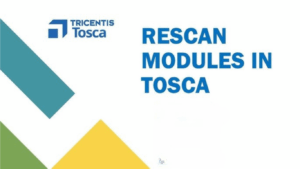When you are testing web applications, handling checkboxes is a common task to perform. Checkboxes are frequently used so that the users can choose from a list of options or to show that they can accept the terms and conditions. In this article, you are going to learn how to use Selenium WebDriver to handle checkboxes. Concepts like Finding checkbox elements, checking and unchecking checkboxes, and confirming checkbox status will all be covered in this article. So, let’s begin. To learn more about Handling Checkboxes, check out our Selenium course online.
Locating Checkbox Elements in Selenium
You can locate Checkboxes by using a variety of locators, including IDs, names, class names, and XPath expressions, just like other web elements. You should also note that using a distinct and informative locator is important, especially when identifying checkboxes. This will make sure the right checkbox element is picked.
Checking and Unchecking Checkboxes in Selenium
You can use the click() method to check or uncheck the checkbox element after you locate it. After simulating a mouse click, you can then follow this approach, because it allows the checkbox element to be toggled between being checked and the unchecked.
Using Selenium WebDriver, you can use the following code to check a checkbox:
checkbox_element.click()
Verifying Checkbox Status in Selenium
After checking or unchecking the elements, one important thing for you to do is to verify the checkbox’s state to make sure the right action was taken. You can do this by using the is_selected() method. If the checkbox is checked, it returns True; if not, it then returns False. Quite easy to understand, right!
Best Practices for Handling Checkboxes with Selenium WebDriver
It is important for you to adhere to the following best practices to make sure your l automated tests employing checkboxes are robust and reliable:
1. You can use unique and descriptive locators to locate checkboxes: It is better for you to use distinctive and descriptive locators. For example: names, IDs, or XPath expressions, to locate checkboxes. Your test scripts will become easier to read and maintain as a result.
2. Try to always verify checkbox status: Another best practice that you can follow is to make sure the right action was taken, that is, always use the is_selected() method to verify the status of a checkbox after checking or unchecking it.
3. You can make use of explicit waits: Using explicit waits is another best practice to follow because it makes sure the element is accessible and clickable before you try to click it (this is applicable whenever you interact with a checkbox). This will help you in keeping your test scripts free of mistakes and timeouts.
4. Handle checkbox groups carefully: You have to make sure that you choose the right checkbox element. Also, you should confirm its state when working with checkbox groups.
5. Make Use of Page Object Model: You can more effectively organise and manage your test scripts by utilising the Page Object Model design pattern. You may manage and reuse the web page elements across several test cases more easily if you put them into their own class.
How to Locate and Select Checkboxes in Selenium?
As we have said earlier, checkboxes are a common user interface element that allows you as a Selenium user to pick one or more alternatives from a list. You can use different locators like ID locator, XPath locator, and CSS Select Locator in Selenium to manage checkboxes.
Now, how can you use any of these Locators in Selenium to find and locate checkboxes. Let’s find out:
1. ID locator: You can locate and interact with a checkbox by using the ID locator especially if it has a unique identification. In Selenium, you can use the findElement(By.id()) method to find a checkbox using the ID locator.
2. XPath locator: You can also use XPath Locators to find XPath locators. It finds them according to their properties or location inside the HTML content. In Selenium, you can use findElement(By.xpath()) method to find a checkbox using XPath.
3. CSS Select Locator: You can use CSS Select Locators to also find checkboxes based on their characteristics or position (especially if they are found in an HTML document). In Selenium, you can use the findElement(By.cssSelector()) method to find a checkbox using CSS Select Locator.
Finally, you can use different locators like the ID locator, XPath locator, and CSS Select Locator, to find and select checkboxes in Selenium. The particular HTML structure and properties of the checkbox element will determine which kind locator you should use. After locating the checkbox, you can then use the click() method to interact with it and also to select or deselect it.
Conclusion
When testing web applications, handling checkboxes with Selenium WebDriver is a frequent task. In this article, we looked at the use of distinct and descriptive locators to find checkbox items. Also, we learnt how to use the click() method to check and uncheck checkboxes and the is_selected() method to confirm the status of checkboxes. Additionally, we discussed some recommended practices for using Selenium WebDriver to handle checkboxes. It involves checking the status of checkboxes, treating checkbox groups cautiously, employing explicit waits, etc.
You can create dependable and strong automated tests with testing checkboxes for your web application by adhering to these best practices. Checkbox handling is easy with Selenium WebDriver, and you can quickly include checkbox testing into your entire test suite. Check out our Selenium training and placement online to learn more.

































